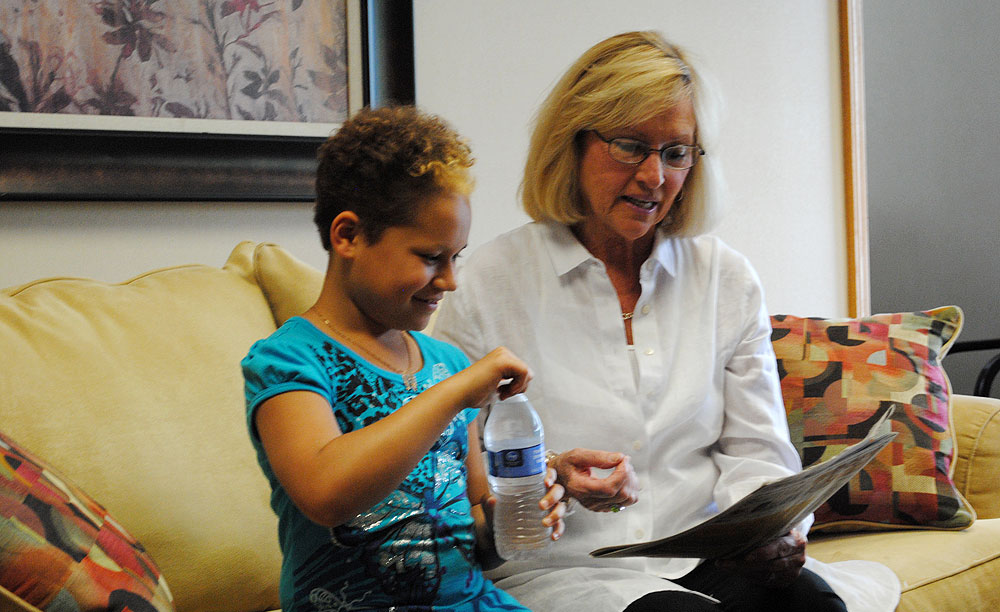By Pete Smith
“Can we save kids? And can it be cost-effective?”
Those are the questions Westfield Mayor Andy Cook recalls asking when he was first approached with the idea of implementing a program to help kids turn their lives around before they entered the legal system.
Even in an affluent community like Westfield, Cook said he realized there were lots of at-risk kids who would benefit.
That was four years ago. Today Cook would describe the program as a resounding success that he credits with pointing more than 400 kids’ lives in the right direction.
“If a kid is in trouble, the community wraps their arms around them and puts them back on track,” he said.
Carmel considers the program
Hamilton County Circuit Court Judge Paul Felix and Superior Court 1 Judge Steven Nation created the Youth Assistance Program and watched it spread after the success that Westfield schools achieved.
The program has now been in place for a year in Noblesville schools and for the past school semester at Hamilton Southeastern schools in Fishers.
“It’s a community-based program,” Felix said. “We don’t tell the community what to do; the community tells us.”
And while practices may vary, the concept is always the same. Schools work to identify at-risk kids and then connect them and their families with tutors, mentors and services that already exist in the community, but that they might not be aware of. The success of the program caught the attention of Carmel schools officials.
“We are currently reviewing the concept,” said Steven Dillon, Carmel schools’ Director of Student Services.
Dillon said the idea grew legs after he and Judge Nation worked on a committee several years ago. He’s also gotten plenty of positive feedback from his peers in Westfield and Hamilton Southeastern schools.
He said that Carmel schools Superintendent Nicholas Wahl and the school board would still need to approve the program’s implementation because it could incur some expenses.
Carmel currently has counselors and social workers in every one of its schools, but Dillon said a Youth Assistance Program could function as an “umbrella program” to unite all of the community’s assets.
“There’s never enough hands to do the work,” Dillon said. “This would be a nice addition to set on top of our other services.”
How is ‘at-risk’ defined?
“This is not just a mentoring program,” said Tricia Akers, the program director for Hamilton County.
And some of its most visible representatives are the “early intervention advocates” that scour the community for resources to help the children the schools identify as at-risk.
The term “at-risk” could be defined differently by each community, but typical at risk behaviors could include:
● Tardiness
● Absenteeism
● Not turning in assignments
● Displaying passive-aggressive or hostile behavior
But Felix advises that the best indicator of an at-risk kid is when a child displays a sudden behavior change that would concern a teacher.
Cook also noted that family factors such as coming from a single-parent household, being raised by a grandparent or experiencing a trauma are also factors that need to be considered.
But whatever the criteria, the goal is always the same: reach the kids before they get to the judicial center.
“We’re just two judges working to put ourselves out of business,” Felix said of his and Nation’s efforts.
How effective is the program?
Cook is quick to point out that he has seen a noticeable improvement in Westfield schools since the program was implemented.
He notes that 98.4 percent of Westfield’s students now graduate from high school – a rate he claims is the highest graduation rate in Hendricks, Boone and Hamilton counties – all while seeing a decrease in the number of kids entering the juvenile justice system.
“I think our school system has discovered we can show them a return,” Cook said. “And not only can we save kids’ lives, we can show an increase in the areas that they are already being measured by. It’s a win-win.”
Cook said that no state or federal funds are used to pay for the program or its early intervention advocates.
“It’s a social program, but it’s done without a lot of tax dollars,” he said.
Instead, a nonprofit board of directors manages the program and multiple fundraisers are staged throughout the year to raise money.
He said the program also got a grant from the Legacy Fund of Hamilton County. And Cook himself hosts a Westfield Mayor’s Ball fundraiser for the program.
And Westfield is currently participating in an Indiana University study that aims to create an evaluation tool to measure the program’s successes, such as improving students’ most important attributes like honesty and motivation.
Cook said, “If a kid is not equipped with the tools of life, all the education will mean nothing.”
Westfield’s Youth Assistance Program statistics for 2013:
79 – new children referred to the program by schools and prosecutor
52 – cases were still active
31 – cases were deemed successful, meaning all original goals were met
1 – case was unsuccessful and was forwarded to the prosecutor’s office
23 – families declined the program’s services



